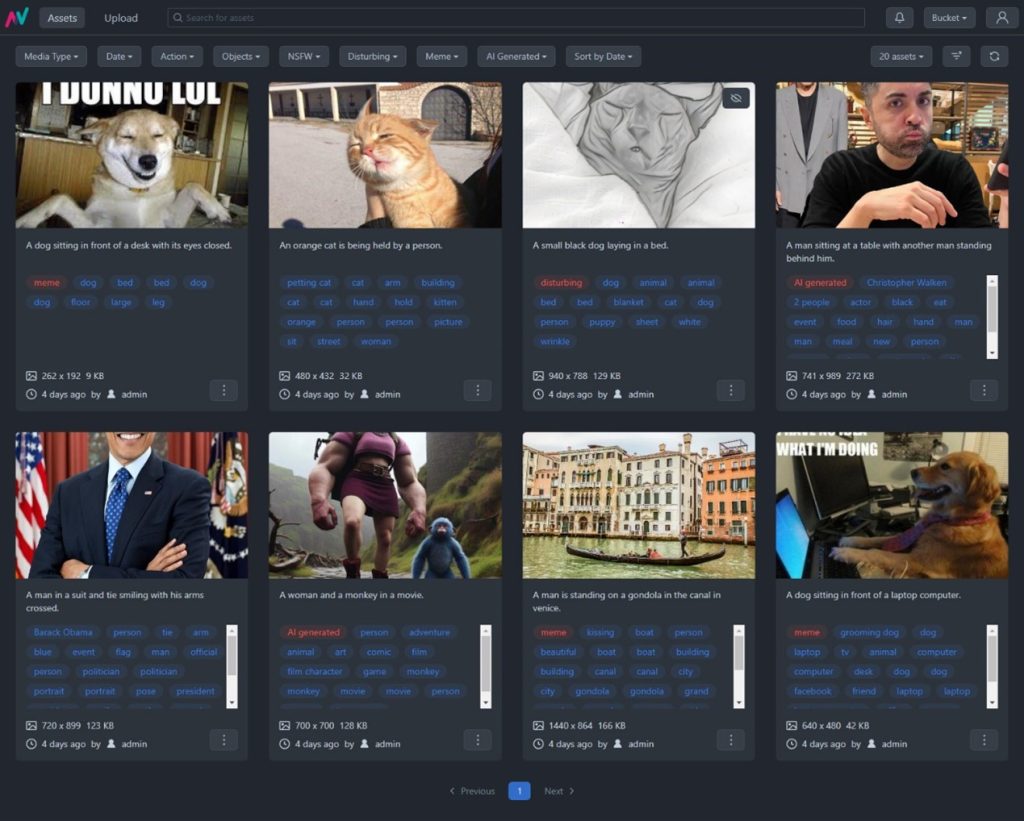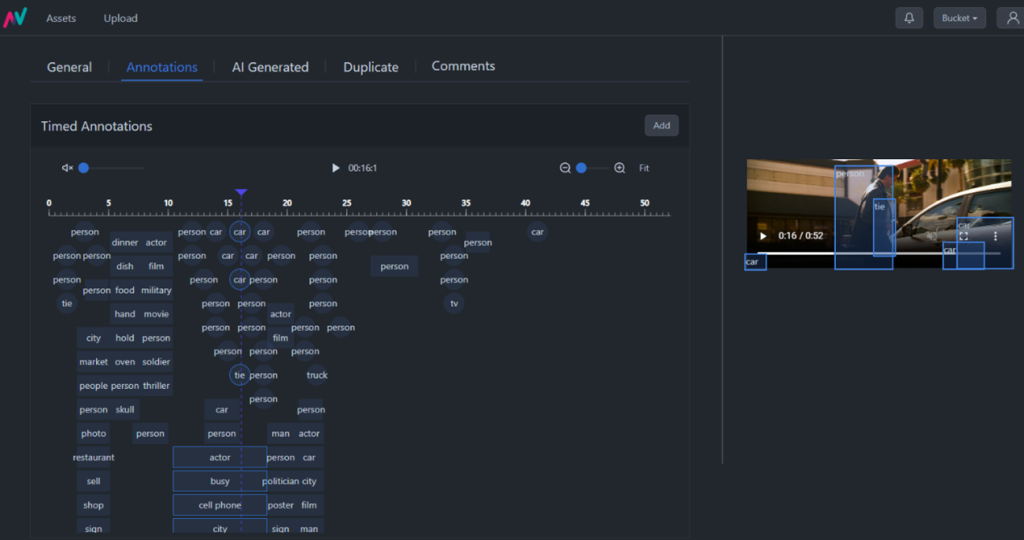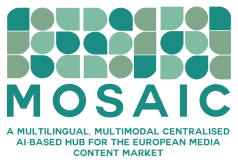In an era of ever-growing digital content, managing vast collections of media assets efficiently has become a critical challenge. Whether you’re dealing with image, video or multimedia repositories, organizing and retrieving relevant assets quickly can significantly improve workflow efficiency.
What is MAAM?
Media Asset Annotation and Management (MAAM) is a powerful, specialized platform designed to revolutionize how media annotations are utilized for seamless asset organization and retrieval. Unlike traditional media management systems that rely on manual tagging and keyword searches, MAAM integrates AI-powered annotation models to enhance content discoverability.
At its core, MAAM is built to support visual similarity-based retrieval combined with annotation filtering, making it an adaptable and intelligent platform for users across various industries. Whether used in media production, digital asset management, or content moderation, MAAM offers a flexible and intuitive approach to handling large volumes of media assets.

Figure 1: MAAM dashboard illustrating the automated captioning and annotations assigned to media files
Key Features of MAAM
1. Automatic Media Annotation
One of MAAM’s standout features is its ability to automatically annotate media assets using AI-driven models. This allows users to categorize, organize, and retrieve content more efficiently by assigning relevant metadata. Specifically, MAAM enables users to:
- Assign automatic labels to images and videos based on detected objects, scenes, or actions.
- Filter searches using these annotations to quickly locate semantically related content.
- Group related assets into Projects, helping users create structured, meaningful collections.
By automating the annotation process, MAAM significantly reduces manual workload while improving the accuracy of media organization.
2. Visual Concept Similarity & Retrieval
MAAM enhances content discovery through visual similarity and retrieval technology. This feature enables users to:
- Expand their media collections by identifying conceptually similar assets.
- Locate files that share common themes, styles, or visual elements.
- Build dynamic content-driven projects without relying solely on metadata-based searches.
For example, a media professional looking for images with a specific aesthetic or thematic similarity can use MAAM’s visual retrieval feature to find related assets with ease.

Figure 2: AI-generated temporal annotations in a video file
3. Advanced Annotation Models for Enhanced Media Understanding
To further enrich media assets with valuable metadata, MAAM integrates multiple AI-powered annotation models, including:
- Automatic Captioning – Generates descriptive text captions for images and videos, making content more accessible and searchable.
- Object Detection – Identifies and labels objects within media files for detailed asset descriptions.
- Disturbing Content Detection – Flags potentially sensitive or harmful content, aiding in content moderation.
- Not Safe for Work (NSFW) Content Detection – Detects inappropriate media to ensure compliance with safety guidelines.
- Meme Detection – Recognizes and categorizes meme content, which is crucial for social media analysis and digital forensics.
- Near-Duplicate Detection – Helps identify visually similar or duplicated media assets, reducing redundancy in large media collections.
- AI-Generated Content Detection (Deepfake Identification) – Differentiates AI-generated content from authentic media, helping to combat misinformation and synthetic media manipulation.
- Tampered Image Detection – Identifies digitally altered or manipulated images, making it valuable for forensic analysis and authenticity verification.
- Geolocation Based on Media Content – Extracts geolocation data from media files to provide contextual location-based insights.
These sophisticated AI models enable MAAM to enhance metadata accuracy, improve searchability, and facilitate content moderation.
MAAM As Part of MOSAIC
The MOSAIC project (Multilingual Multimodal Centralised AI-based Hub for the European Media Content Market) is an EU-funded initiative that aims to revolutionize media creation, distribution, and accessibility across Europe. By integrating cutting-edge AI-powered tools, MOSAIC aims at empowering broadcasters, media producers, and independent creators to break down linguistic and cultural barriers paving the way for a more inclusive and interconnected European media landscape
As part of MOSAIC, MAAM will evolve into a comprehensive multimedia repository, with extended functionalities tailored to the needs of broadcasters and content creators, ensuring faster and more efficient media access and repurposing. With these innovations, broadcasters and media producers will gain unprecedented control over their assets, unlocking new possibilities for content creation and distribution.
Want to discover how MAAM can revolutionize your media workflow? Stay tuned for updates on MOSAIC and its transformative impact on the media industry!
